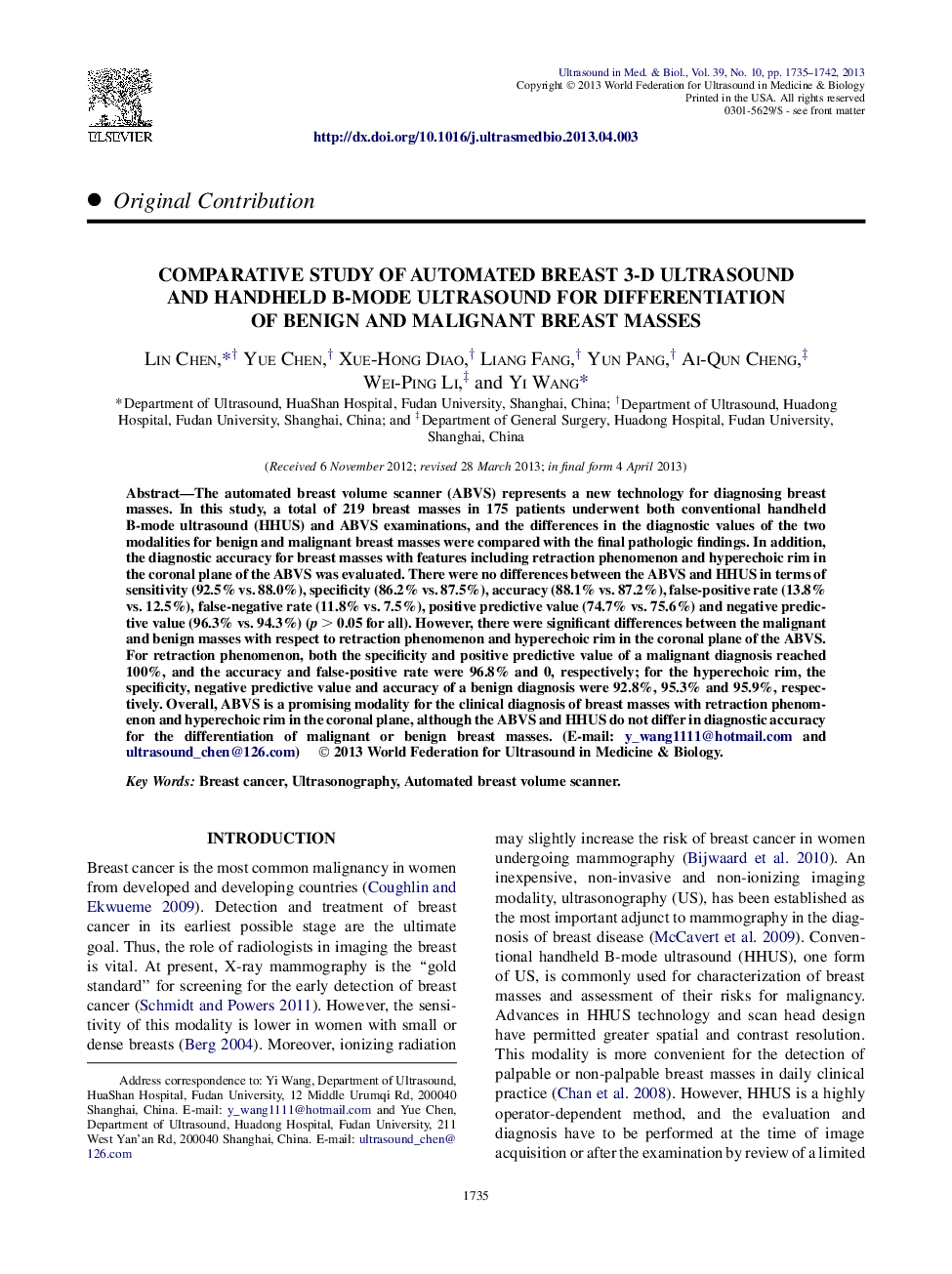| Article ID | Journal | Published Year | Pages | File Type |
|---|---|---|---|---|
| 1760797 | Ultrasound in Medicine & Biology | 2013 | 8 Pages |
Abstract
The automated breast volume scanner (ABVS) represents a new technology for diagnosing breast masses. In this study, a total of 219 breast masses in 175 patients underwent both conventional handheld B-mode ultrasound (HHUS) and ABVS examinations, and the differences in the diagnostic values of the two modalities for benign and malignant breast masses were compared with the final pathologic findings. In addition, the diagnostic accuracy for breast masses with features including retraction phenomenon and hyperechoic rim in the coronal plane of the ABVS was evaluated. There were no differences between the ABVS and HHUS in terms of sensitivity (92.5% vs. 88.0%), specificity (86.2% vs. 87.5%), accuracy (88.1% vs. 87.2%), false-positive rate (13.8% vs. 12.5%), false-negative rate (11.8% vs. 7.5%), positive predictive value (74.7% vs. 75.6%) and negative predictive value (96.3% vs. 94.3%) (p > 0.05 for all). However, there were significant differences between the malignant and benign masses with respect to retraction phenomenon and hyperechoic rim in the coronal plane of the ABVS. For retraction phenomenon, both the specificity and positive predictive value of a malignant diagnosis reached 100%, and the accuracy and false-positive rate were 96.8% and 0, respectively; for the hyperechoic rim, the specificity, negative predictive value and accuracy of a benign diagnosis were 92.8%, 95.3% and 95.9%, respectively. Overall, ABVS is a promising modality for the clinical diagnosis of breast masses with retraction phenomenon and hyperechoic rim in the coronal plane, although the ABVS and HHUS do not differ in diagnostic accuracy for the differentiation of malignant or benign breast masses.
Related Topics
Physical Sciences and Engineering
Physics and Astronomy
Acoustics and Ultrasonics
Authors
Lin Chen, Yue Chen, Xue-Hong Diao, Liang Fang, Yun Pang, Ai-Qun Cheng, Wei-Ping Li, Yi Wang,
